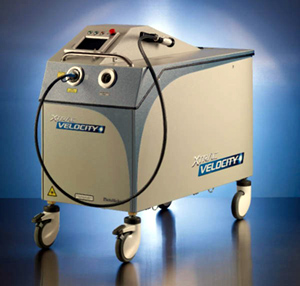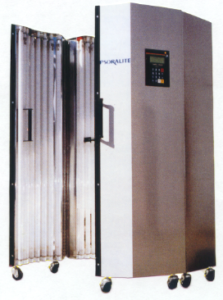Psoriasis
Psoriasis is a non-contagious, lifelong skin disorder affecting nearly 3 percent of the world’s population. It appears as a red, thickened area with silvery scales that form most often on the scalp, elbows, knees or lower back.
Psoriasis takes many forms and each differs in severity, duration, location, shape and scale pattern. The most common form, plaque psoriasis, begins with small red bumps that gradually increase in size and then form scales. Top scales flake off easily and often, but scales below the surface stick together and often enlarge.
Raleigh Dermatology’s treatment goal for psoriasis patients is to reduce inflammation and control shedding of the skin. We often prescribe medication containing cortisone compounds, synthetic vitamin D analogues, retinoids, tar or anthralin. Light Therapy is another option available as Puva or UVB.
Raleigh Dermatology’s XTRAC Excimer Laser offers the latest psoriasis treatment available and delivers fast, effective relief from dry, itchy and unsightly lesions. The XTRAC Excimer Laser works by carefully focusing a beam of light directly on the lesion, allowing the application of high doses of light to rapidly clear the lesion. Most patients feel no pain or discomfort during an XTRAC Laser session. Occasionally, patients report a warm sensation at the treatment site, similar to mild sunburn.
Individuals with mild to moderate psoriasis who have who have not experienced success with topical treatments, oral medications, injections or traditional phototherapy, should consider undergoing XTRAC Excimer Laser treatments.
The newest medical treatment for psoriasis consists of a new category of systemic medications referred to as “Biologics.” Under this category, we are commonly using Enbrel and Humira. These new products are given once a week by way of self-administered injections. All of the “Biologics” products function at the immuno-cellular level, blocking the activation of inflammatory cells.
Xtrac Excimer Laser Therapy
 UVB (ultraviolet light) is the most common form of phototherapy used to treat various skin diseases, including psoriasis. You will be exposed to this high energy UV light for a varying length of time. This treatment is NOT A CURE, but can effectively control or improve your disease. Patients have used this treatment successfully for many years and often are able to maintain clearance of improved skin over extended periods of time.
UVB (ultraviolet light) is the most common form of phototherapy used to treat various skin diseases, including psoriasis. You will be exposed to this high energy UV light for a varying length of time. This treatment is NOT A CURE, but can effectively control or improve your disease. Patients have used this treatment successfully for many years and often are able to maintain clearance of improved skin over extended periods of time.
The excimer laser is new form of UVB phototherapy that emits more selective light rays. The laser delivers the light rays useful for treatment and tends to eliminate those that may cause burning. Clinical studies suggest that this kind of treatment may clear psoriasis in the range of about 10+ treatments (other skin conditions may vary treatment length) but, everybody is different and do not respond the same and might need several months of treatment once or twice a week for better results.
The expected benefits of excimer laser phototherapy are:
- Improvement of existing lesions
- Reduction of new lesions (new lesions will still come up)
- Remission – In many cases phototherapy has resulted in a near total clearing of the disease process. The duration of this remission varies with each patient.
- Maintenance therapy may be required.
- Treatment of the affected areas only, healthy skin is avoided
Risk and side effects of the excimer laser phototherapy:
- The most common side effect of this therapy is UVB induce sunburn. This may occur at any time during therapy. Certain drugs may also cause you to get sunburned. Please let your doctor/nurse know of any medications that you are taking, or any that you begin while undergoing therapy.
- A blistering sunburn-type reaction can occur. If this does occur apply polysporin to the affected area and keep it cover with a Band-Aid. You can still come to your treatment areas that are blistered will be avoided until healed.
- Increased pigmentation may occur, especially after blistering sunburn-type reactions (areas being treated will get darker and fade with time after treatment is completed).
- It is possible with any form of UV light than an increased incidence of skin cancer may occur later in some patients, usually only with many UV light treatments
- UV treatments may cause dryness, flakiness and itching. If this occurs use a moisturizing cream often as needed.
- UV treatments age the skin over time and may increase freckles and pigmentation of the skin.
- Ultraviolet rays may damage the eyes and increase your risk of cataracts. This is preventable with protective eye goggles worn during treatment, or you can keep your eyes closed.
Questions on the Xtrac Photomedex Laser Therapy
1. WHO SHOULD CONSIDER THE XTRAC THERAPY?
Almost all patients with plaque psoriasis are candidates for the XTRAC Therapy. If you have mild, moderate or severe psoriasis, you should consider the XTRAC Therapy.
2. ON WHAT BODY AREAS CAN THE XTRAC THERAPY BE USED?
The XTRAC Therapy can be used on any plaque psoriasis regardless of location on the body. The XTRAC Therapy is excellent for hard to treat areas such as the scalp, knees or elbows.
3. IS THE XTRAC THERAPY SAFE TO USE ON CHILDREN?
Yes. XTRAC treatments have been performed on children as young as just a few years old.
4. IS THE XTRAC THERAPY SAFE TO USE ON PREGNANT WOMAN OR WOMEN WHO ARE NURSING?
Yes.
5. HOW QUICKLY WILL I SEE RESULTS?
Most patients will begin to notice improvement in their psoriasis within 6 to 10 treatments, Individual results will vary.
6. IS THERE ANY PAIN ASSOCIATED WITH THE XTRAC THERAPY?
No. Most patients feel no pain or discomfort during the XTRAC Therapy.
7. IS ANESTHESIA REQUIRED WITH THE THERAPY?
No. The XTRAC treatment is pain free.
8. HOW LONG DOES A TREATMENT TAKE?
Treatments are relatively quick. The exact time depends on how many psoriasis areas are being treated with the XTRAC. Typically, patients can be in and out of the treatment room in ten to fifteen minutes.
9. HOW LONG WILL PSORIASIS CLEARING LAST?
Each patient is unique, but psoriasis sufferers who have experienced the XTRAC Therapy have found that relief can last for extended periods of time, typically 4 to 6 months or longer than other psoriasis treatments.
10. IS THE XTRAC THERAPY COVERED BY MY INSURANCE COMPANY?
Major insurance companies and Medicare provide coverage for the XTRAC laser treatments for psoriasis.
11. HOW MUCH DOES THE THERAPY COST?
The XTRAC Therapy is covered by most insurance companies and Medicare. If you are covered by insurance, typically your costs will be your standard co-pay or deductible costs. If you do not have insurance coverage, our office can discuss a cash payment plan.
12. HOW OFTEN IS THE XTRAC THERAPY GIVEN?
The XTRAC Therapy is performed two times per week. Your physician will discuss with you the best treatment program that fits your need.
13. CAN I USE OTHER TREATMENTS ALONG WITH THE XTRAC THERAPY, SUCH AS TOPICALS OR BIOLOGICS?
Yes, our providers will go over the best treatment plan on your initial visit.
Light Box Therapy
 Phototherapy is a treatment that involves the exposure of the skin to Ultraviolet light. The physician who is treating determines this. Supervised by a physician, ultraviolet light B (UVB) narrow band is standard treatment for moderate-to-sever psoriasis. Its actions are to slow down the reproduction of skin cells. In controlled doses, UVB can be used to treat many skin disorders.
Phototherapy is a treatment that involves the exposure of the skin to Ultraviolet light. The physician who is treating determines this. Supervised by a physician, ultraviolet light B (UVB) narrow band is standard treatment for moderate-to-sever psoriasis. Its actions are to slow down the reproduction of skin cells. In controlled doses, UVB can be used to treat many skin disorders.
Please contact us at 919-876-3656 to learn more about Psoriasis or to schedule an appointment.



